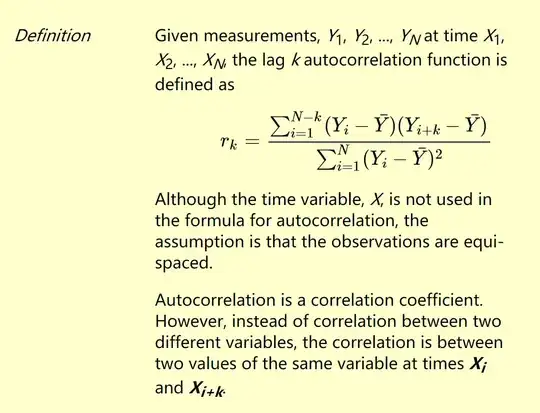I cannot figure out how na.pass in the acf function in R addresses NAs. For example:
a<-acf(x=c(1,NA,2),na.action = na.pass)
a$acf
I get the following results:
> a$acf
, , 1
[,1]
[1,] 1.0000000
[2,] NA
[3,] -0.3333333
To be honest I really couldn't get the value -0.3333333.
I am so confused about how the function treats NA in the very bottom? The original equation is:
But what is the equation for an irregular time series? (I don't want to use na.exclude, I want to keep the NAs in my data!)
Thanks!
